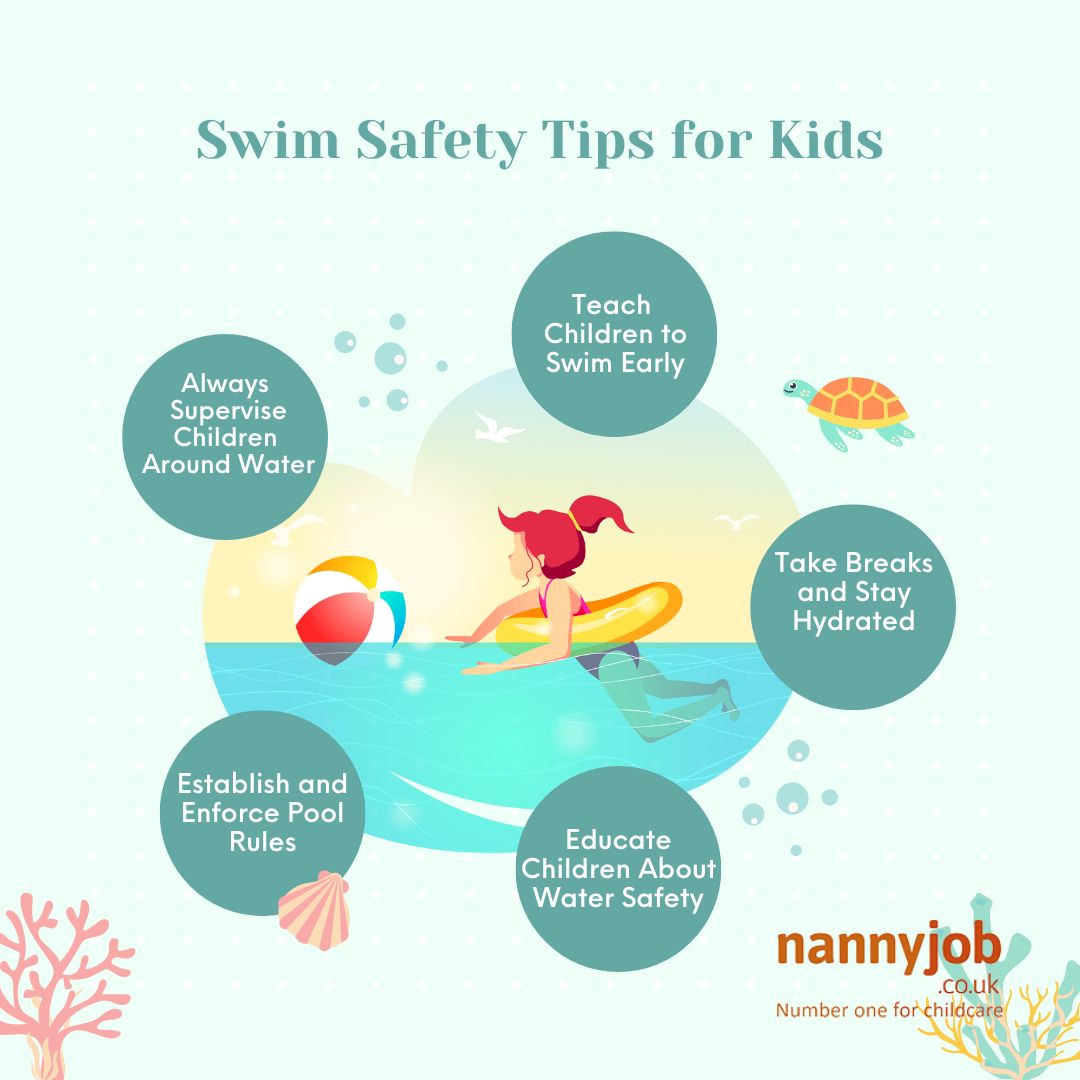Introduction
Swimming is a wonderful way for children to stay active and have fun, especially during the warmer months. However, water safety is a crucial concern that every parent, nanny, and childcarer should prioritise. Drowning is one of the leading causes of accidental injury and death in children, making it vital to ensure that safety measures are always in place. Here are some essential swim safety tips to help keep children safe in and around the water.
1. Always Supervise Children Around Water
Constant supervision is the most important safety measure when children are swimming. Whether at a pool, beach, or lake, an adult should always be within arm’s reach of young children. Even if lifeguards are present, never rely solely on them to watch your child. Designate a responsible adult to actively supervise at all times.
2. Teach Children to Swim Early
Enrolling children in swimming lessons can significantly reduce the risk of drowning. Children who learn to swim are more confident and capable in the water, which enhances their safety. Swimming lessons should include not only basic swimming techniques but also water safety skills, such as floating, treading water, and understanding pool rules.
3. Use Life Jackets for Inexperienced Swimmers
For children who are not strong swimmers, or when swimming in open water, life jackets are essential. Ensure that the life jacket is U.K. approved (or equivalent in your country) and fits the child properly. Remember, floaties or inflatable toys are not substitutes for life jackets and should not be relied upon for safety.
4. Establish and Enforce Pool Rules
Establish clear rules for swimming, such as no running around the pool, no diving in shallow water, and no swimming without adult supervision. Make sure children understand and follow these rules every time they swim. Consistency is key in helping children remember and respect water safety guidelines.
5. Educate Children About Water Safety
Teach children about the dangers of water and how to stay safe. Explain the importance of staying away from drains, swimming only in designated areas, and understanding the meaning of pool and beach signs. Knowledge empowers children to make safer choices in and around water.
6. Practice Emergency Preparedness
Ensure that you, and anyone else responsible for watching children, know how to respond in an emergency. This includes knowing CPR and basic first aid, as well as having a plan for contacting emergency services. Keep a phone and emergency numbers nearby whenever children are swimming.
7. Keep Pools Secure
If you have a pool at home, make sure it is secured with a fence that is at least four feet high and has a self-latching gate. Remove any pool toys from the water when not in use, as they can attract children to the pool. Consider using a pool cover and alarm for additional safety.
8. Be Cautious with Open Water
Swimming in open water, such as oceans, lakes, or rivers, presents additional risks compared to swimming in a pool. Always check the conditions, such as currents and tides, before allowing children to swim. Teach children to stay close to the shore and never swim alone.
9. Take Breaks and Stay Hydrated
Swimming is physically demanding, so encourage children to take regular breaks and stay hydrated. Fatigue can lead to accidents, so make sure children rest between swimming sessions and drink plenty of water.
Conclusion
Swimming is a fun and healthy activity for children, but it comes with important safety considerations. By following these swim safety tips, parents, nannies, and childcarers can help ensure that children stay safe while enjoying the water. Remember, vigilance, education, and preparedness are the keys to preventing accidents and keeping children safe in and around water.

